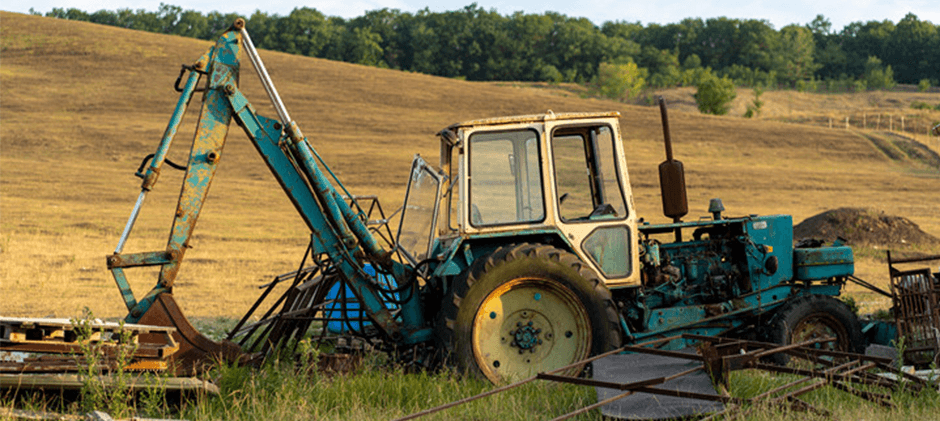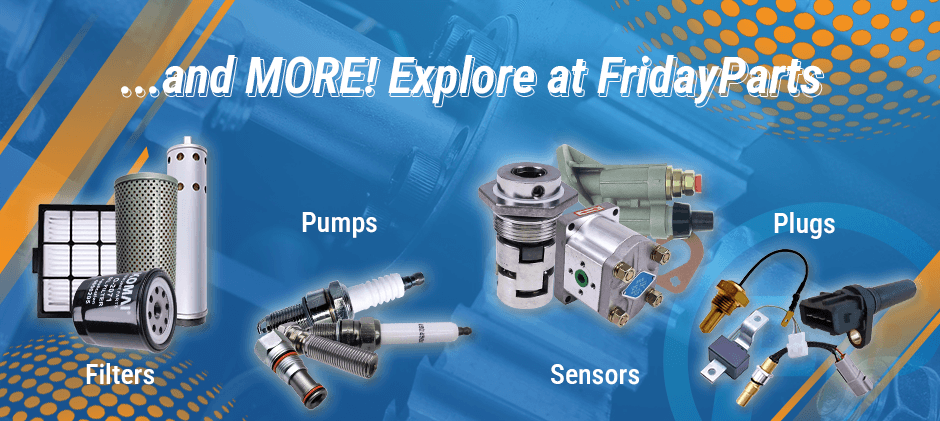Spring is a busy season for farming, have you restarted your tractor yet? Before you are ready to get into the cab and drive the iron machine, there are a few things to check to guarantee the smooth ride. This tractor maintenance checklist will guide you through the essential spring tractor prep steps, focusing on key components that demand attention.

1. Inspect and Change the Engine Oil
Have you used your tractor in winter to sweep up the snow? Or do you store the machine well? Your tractor’s engine may have worked hard, even if it sat idle during the winter. Old oil thickens, loses its lubricating properties, and can cause unnecessary wear. Do you know there is a seasonal difference on oil choice? Though the four-season oil is quite popular, if you have survived an extremely cold winter, you might like to change your engine oil for higher viscosity ones. Conduct an oil change using high-quality oil suited to your tractor’s specifications. Don’t forget to replace the oil filter for optimal performance.
2. Check the Tractor Battery
Cold temperatures can weaken your tractor’s battery, leaving you stranded when it’s time to work. If you gonna see a long time, you won’t use the tractor, remember to get it off the equipment and keep the battery in a clean and dry place. Then you just have to ensure a proper reinstallation. Conduct a tractor battery inspection by checking for corrosion on the terminals, ensuring a full charge, and replacing any batteries that struggle to hold power.
3. Examine and Replace Filters
A neglected filter can reduce fuel efficiency and engine performance. Replace or clean the tractor filters, including air, fuel, and hydraulic filters. Clean air filters prevent dust buildup, while fuel filters ensure contaminants don’t enter the engine. Fresh filters can make a noticeable difference in overall efficiency.
4. Evaluate the Tires for Wear and Pressure
Proper tractor tire maintenance is crucial for safety and efficiency. Check for cracks, dry rot, or uneven wear. Adjust tire pressure to the manufacturer’s recommendations—cold weather can cause deflation, leading to poor traction and increased fuel consumption. If treads are too worn, replace the tires to ensure stability in wet or uneven terrain.
5. Test the Hydraulic System
Your tractor’s hydraulic system powers essential implements like loaders and plows. Conduct a hydraulic system tractor check by inspecting hoses for leaks, ensuring fluid levels are sufficient, and testing responsiveness. Low or contaminated hydraulic fluid can cause sluggish performance, so top it off or replace it if necessary. Just like the engine oil, there are seasonal changes in hydraulic oil, so make sure you choose the right type.

6. Inspect and Maintain the Fuel System
A neglected tractor fuel system can lead to clogs, poor combustion, or engine failures. Check fuel lines for cracks or leaks and replace worn-out components. If old fuel sat in the tank over winter, consider draining and replacing it with fresh diesel to prevent gelling or contamination.
7. Check the Cooling System
Overheating is a major cause of tractor failure, especially during spring and summer. Inspect the radiator for clogs, check coolant levels, and ensure hoses are in good condition. If the coolant appears dirty or sludgy, flush the system and refill with the correct antifreeze mixture.
8. Lubricate Moving Parts
Lubricating the moving parts is often forgotten in the tractor maintenance checklist. Spring brings increased workload, making lubrication a priority. Grease pivot points, linkages, and any moving parts prone to wear. Proper lubrication reduces friction, extends the lifespan of parts, and prevents premature failure.
9. Examine Electrical Components
Faulty wiring or blown fuses can lead to frustrating delays. Inspect lights, sensors, and connections to ensure everything functions correctly. Clean off any corrosion and replace damaged wires to prevent electrical failures during operation.
10. Perform a Full Safety Check
Before putting your tractor to work, conduct a final tractor spring readiness inspection. Ensure brakes, steering, and PTO (Power Take-Off) components operate smoothly. Tighten loose bolts, confirm seatbelt functionality, and check emergency shut-offs. A safe tractor is a reliable tractor.

Conclusion
By following this tractor maintenance checklist, you can prevent costly breakdowns and keep your machine running efficiently all season. Spring tractor prep isn’t just about starting the engine—it’s about ensuring every system is in peak condition for maximum productivity. A little time spent on maintenance now can save you countless hours of repairs later. So, get your hands dirty, inspect those tractor engine parts, and roll into spring with confidence!
If you are in any need of tractor parts, remember that FridayParts has you back! FridayParts is a professional tractor parts store. Our inventory covers a wide range of brands, including Komatsu, CASE, CAT, Kubota, and more leading brands. Maintaining a tractor isn’t just about learning, it’s about practice. Shop at FridayParts, so you can save a lot of time and money on choosing the best parts for your tractor!
